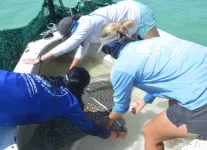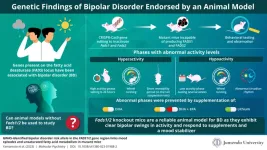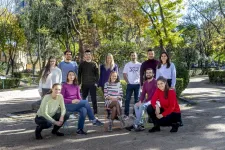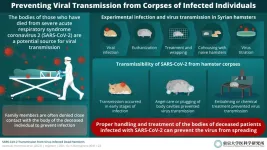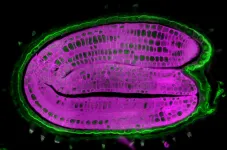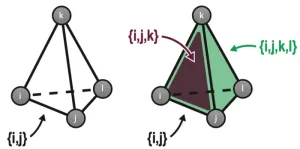(Press-News.org) AMES, IA — With the youngest baby boomers sliding into retirement, adults aged 65 and older are expected to outnumber children by 2030. The demographic shift will be a first in U.S. history. But many rural areas, especially in the Midwest and Great Plains, are already experiencing this.
Researchers are looking to small towns in Iowa to understand how some support aging in place better than others. Their findings, published in Journal of Rural Studies, could help communities plan for the future and preserve a high quality of life for all residents. David Peters, professor of rural sociology at Iowa State, co-authored the paper with Ilona Matysiak, a visiting scholar at Iowa State and associate professor of sociology at Maria Grzegorzewska University in Warsaw, Poland.
“Aging in place is a multidimensional concept,” says Matysiak. “It’s not just about services, like a nursing home or hospital. It’s also about relationships with other people, social capital and the possibilities of community participation.”
The researchers define “smart senior towns” as communities where seniors can live on their own, “safely, independently and comfortably.” They say being a smart senior town is a good development strategy overall.
Matysiak and Peters emphasize “smart senior towns” care about their older residents. But the seniors in these towns also mentor and create spaces for new leaders and ideas.
“Seniors can really help the community prosper and thrive,” says Peters. “They have the time to volunteer, and they're often influential people in the community who have a repository of knowledge about the town and can lend their advice and reputations to local projects. They also often have money saved up to invest in foundations and projects.”
The researchers used data from the U.S. Census and Iowa Small Towns Project, which has surveyed residents from 99 small towns in Iowa every ten years since 1994. The survey questions relate to quality of life, use of local services, perceptions of community leaders, social capital, civic engagement and community attachment. For this study, Matysiak and Peters focused on small towns with a higher percentage of people aged 65 and older compared to other rural communities.
Smart senior towns vs. vulnerable senior towns
The researchers found smart senior towns scored higher on every quality-of-life dimension compared to the “vulnerable senior towns.” Some of the largest differences were related to the quality of medical services (65% vs. 35%) and shopping for daily needs in their hometown (65% vs. 38%). Smart senior towns also scored higher on quality housing, child services, recreation and entertainment venues.
Part of these differences may be related to population size. The researchers found smart senior towns had on average 2,030 people compared to 866 in vulnerable senior towns.
“A larger town can support a grocery store, a restaurant or two and maybe some cultural events. For a town of 900, it’s a little more difficult,” says Peters.
Older adults from smart senior towns also rated their communities as safer, better kept and as places having more going for them. Poverty rates were nearly identical but median household incomes and home values were significantly higher in smart senior towns. This suggests there are more resources to support community foundations and fund local services and improvement projects.
Older vs. younger residents
"While this paper focuses on the opinions of residents 65 and up, we thought it was also important to know what younger residents think,” says Matysiak. “Do these smart senior towns only provide a good quality of life for older people or are they smart for all residents?”
The researchers found differences between the two age groups in smart senior towns for all quality-of-life dimensions they measured. Residents under 65 more often used services elsewhere and were generally less satisfied with local leadership. They also perceived their community as less trusting and supportive and less likely to be as inclusive for new residents and open to new ideas.
Recommendations
Based on the outcomes from their study, the researchers recommend small towns:
Partner with neighboring communities to share costs for services, programs and events
Recognize that older people have agency and are active contributors to the quality-of-life in their communities
Involve younger people and newcomers in local decision making and show support for change
Peters says he recently gave a presentation in a northern Iowa town that was in the process of opening a hog processing facility. At the end, a group of retirees on the local library board approached him to ask about resources to learn Spanish. They were anticipating an increase in Spanish-speaking students in the town and wanted to start a bilingual after-school reading program at the library.
“The narrative of these small towns is often that there’s anger or fear about newcomers, but here’s this town with people who were very open and caring and wanted to help move the community forward,” says Peters. “I think it speaks well to the Iowa spirit and what’s possible in our small towns.”
Funding for their latest study came from Fulbright Poland, Polish National Agency for Academic Exchange, and U.S. Department of Agriculture’s National Institute of Food and Agriculture.
END
Understanding what makes senior towns in Iowa “smart”
2023-03-07
ELSE PRESS RELEASES FROM THIS DATE:
Researchers create mutant mice to study bipolar disorder
2023-03-07
Bipolar disorder (BD) is a debilitating condition characterized by alternating states of depression (known as depressive episodes) and abnormal excitement or irritability (known as manic episodes). Large-scale genome-wide association studies (GWASs) have revealed that variations in the genes present on the fatty acid desaturase (FADS) locus are linked to an increased risk of BD. Enzymes coded by FADS genes—FADS1 and FADS2—convert or "biosynthesize" omega-3 fatty acids into the different forms required by the human body. Omega-3 fatty acids like ...
New breakthrough enables perfectly secure digital communications
2023-03-07
Researchers have achieved a breakthrough to enable ‘perfectly secure’ hidden communications for the first time.
The method uses new advances in information theory methods to conceal one piece of content inside another in a way that cannot be detected.
This may have strong implications for information security, besides further applications in data compression and storage.
A group of researchers has achieved a breakthrough in secure communications by developing an algorithm that conceals sensitive information so effectively that it is impossible to detect that anything has been hidden.
The team, led by ...
CNIO researchers propose biomarkers to select breast cancer patients who could benefit from denosumab treatment
2023-03-07
The study supports the therapeutic benefit of this drug in postmenopausal patients with hormone-receptor negative breast tumours and RANK protein expression.
"These results revive the option of starting clinical trials of denosumab in breast cancer by selecting patients," says Eva González-Suarez, CNIO researcher and lead author.
The results are published today in the scientific journal EMBO Molecular Medicine.
The drug denosumab is currently used to treat osteoporosis and bone metastases. For more than a decade, its potential therapeutic benefit in the treatment of breast cancer has also been studied. However, due to conflicting clinical ...
The planet that could end life on Earth
2023-03-07
A terrestrial planet hovering between Mars and Jupiter would be able to push Earth out of the solar system and wipe out life on this planet, according to a UC Riverside experiment.
UCR astrophysicist Stephen Kane explained that his experiment was meant to address two notable gaps in planetary science.
The first is the gap in our solar system between the size of terrestrial and giant gas planets. The largest terrestrial planet is Earth, and the smallest gas giant is Neptune, which is four times wider and 17 times more massive than Earth. There is nothing in between.
“In other star ...
Scientists suggest guidelines to prevent SARS-CoV-2 transmission from deceased individuals
2023-03-07
Their findings highlight that embalming or "angel care" can effectively prevent virus transmission, to allow family members to say goodbye
During the pandemic, COVID-19 control measures in several countries prevented family members from coming into contact with loved ones who died from the infection. This had an impact on cremation practices and caused emotional distress. Researchers from Japan have now shown that, while deceased SARS-CoV-2-infected individuals may be a potential source of the ...
An internal thermometer tells the seeds when to germinate
2023-03-07
Germination is a crucial stage in the life of a plant as it will leave the stage of seed resistant to various environmental constraints (climatic conditions, absence of nutritive elements, etc.) to become a seedling much more vulnerable. The survival of the young plant depends on the timing of this transition. It is therefore essential that this stage be finely controlled. A Swiss team, led by scientists from the University of Geneva (UNIGE), has discovered the internal thermometer of seeds that can delay or even block germination if temperatures are too high for the future seedling. This work could help optimize plant growth in a context of global warming. These results can be ...
Study reveals limitations in evaluating gene editing technology in human embryos
2023-03-07
A commonly used scientific method to analyze a tiny amount of DNA in early human embryos fails to accurately reflect gene edits, according to new research led by scientists at Oregon Health & Science University.
The study, published today in the journal Nature Communications, involved sequencing the genomes of early human embryos that had undergone genome editing using the gene-editing tool CRISPR. The work calls into question the accuracy of a DNA-reading procedure that relies on amplifying a small amount of DNA for purposes of genetic testing.
In addition, the study reveals that gene editing to correct disease-causing mutations in early human embryos can also lead to unintended ...
Keck Medicine of USC names Ikenna (Ike) Mmeje president and CEO of USC Arcadia Hospital
2023-03-07
LOS ANGELES — Keck Medicine of USC has named Ikenna (Ike) Mmeje president and CEO of USC Arcadia Hospital (USC-AH), effective March 13.
In this position, Mmeje will further the health system’s mission to expand access to specialized health care and research to the San Gabriel Valley and beyond. He will oversee all management and operations of the hospital, including corporate compliance, strategic plan implementation and fundraising.
“Mmeje will utilize his wealth of knowledge and experience running complex, high-performing hospitals in his new role leading USC Arcadia Hospital,” said Rod Hanners, CEO of Keck Medicine.
Mmeje replaces current ...
What makes a neural network remember?
2023-03-07
Computer models are an important tool for studying how the brain makes and stores memories and other types of complex information. But creating such models is a tricky business. Somehow, a symphony of signals – both biochemical and electrical – and a tangle of connections between neurons and other cell types creates the hardware for memories to take hold. Yet because neuroscientists don’t fully understand the underlying biology of the brain, encoding the process into a computer model in order to study it further has been a challenge.
Now, ...
How do microbes live off light?
2023-03-07
Plants convert light into a form of energy that they can use – a molecule called adenosine triphosphate (ATP) – through photosynthesis. This is a complex process that also produces sugar, which the plant can use for energy later, and oxygen. Some bacteria that live in the light-exposed layers of water sources can also convert light to ATP, but the process they use is simpler and less efficient than photosynthesis. Nonetheless, Technion - Israel Institute of Technology researchers now find this process isn’t as straightforward and limited as was previously thought.
Rhodopsins are the light-driven proton pumps ...

